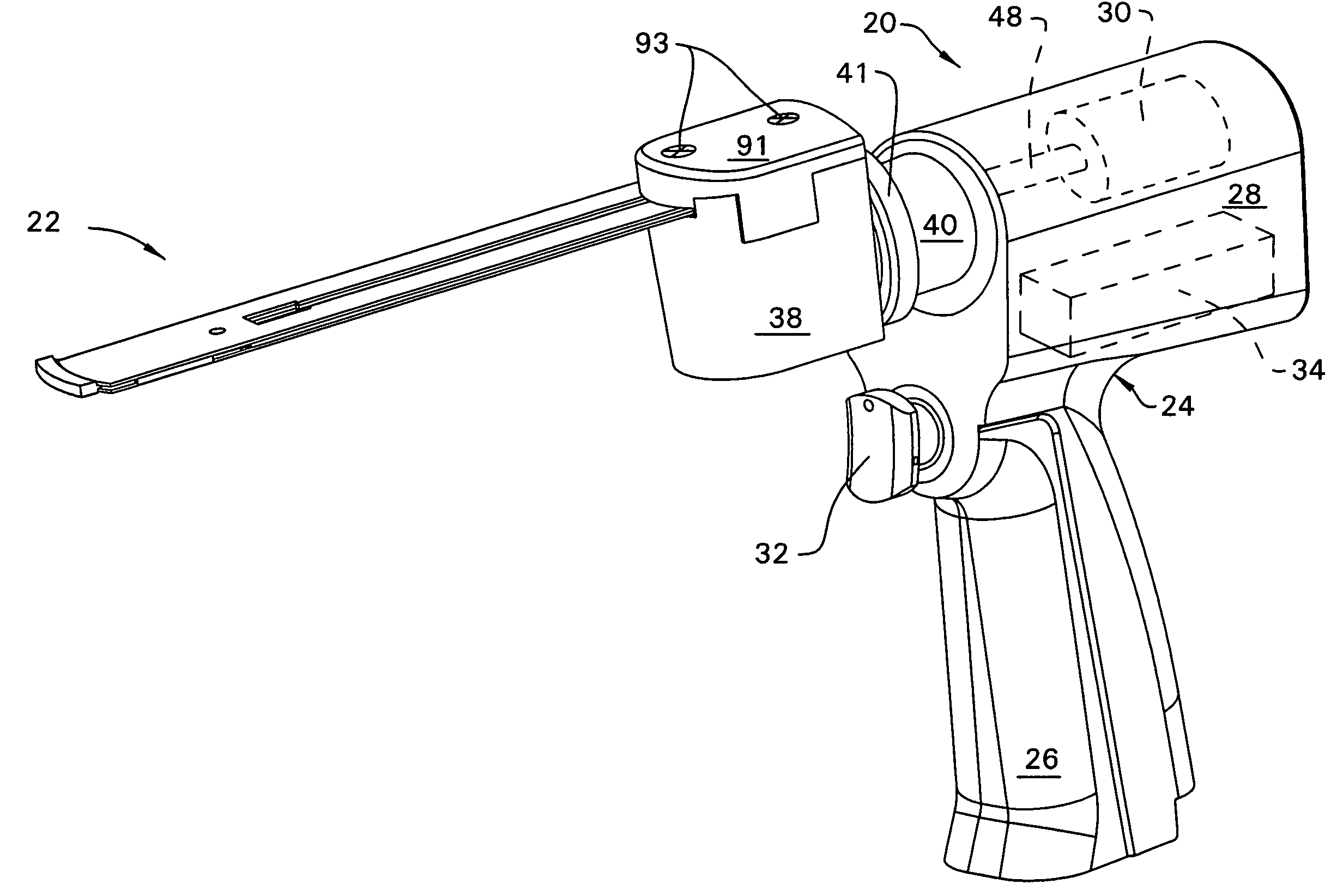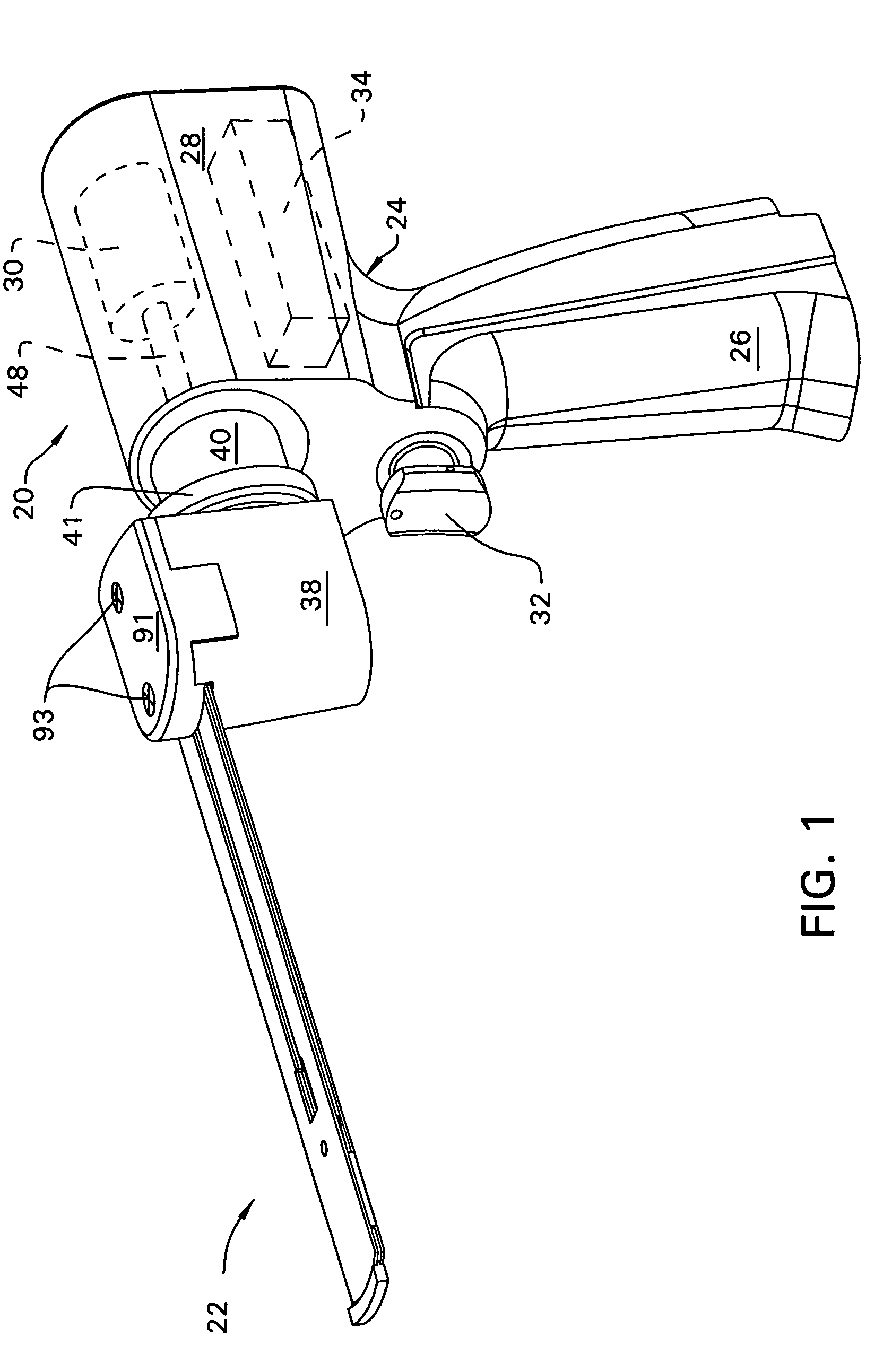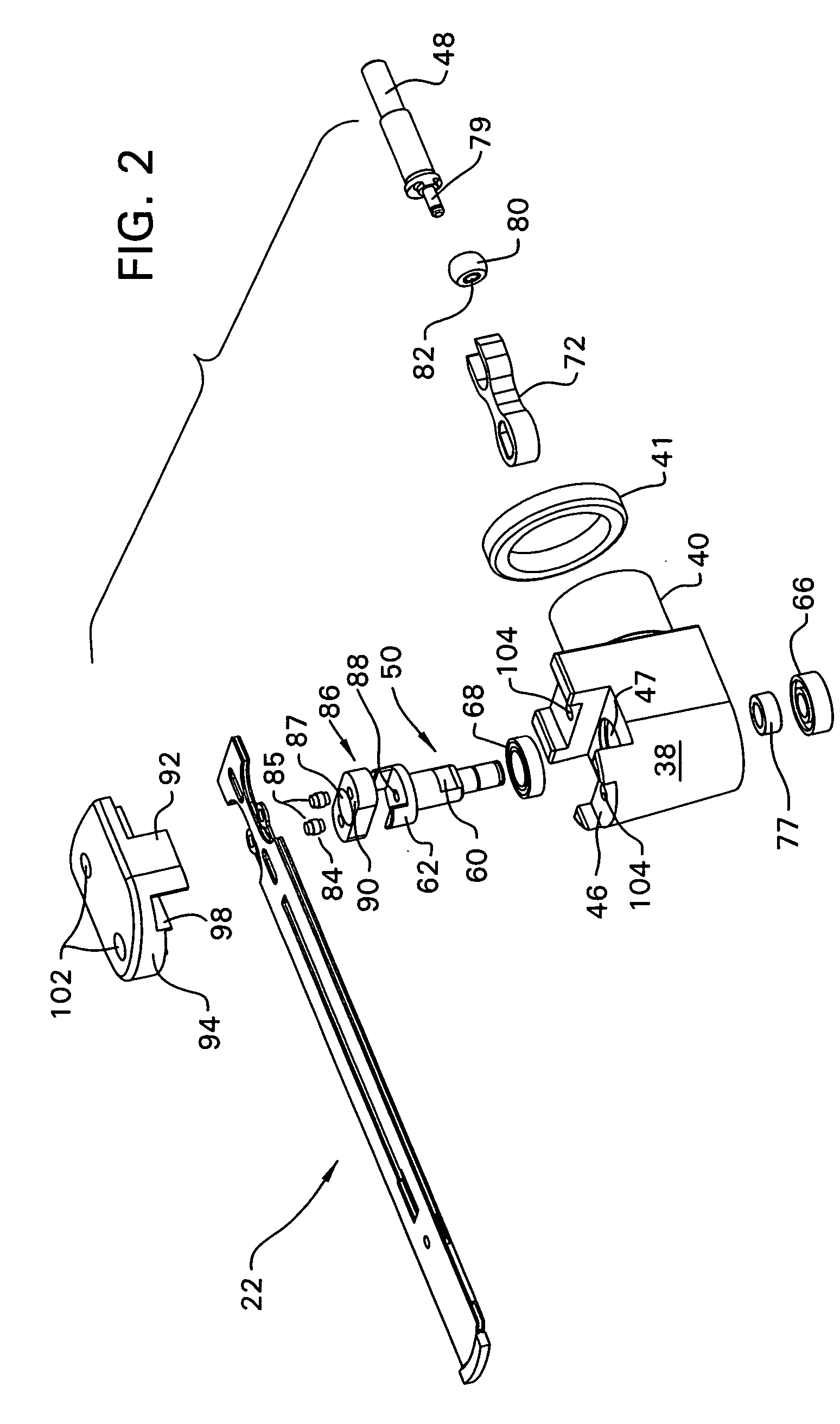Surgical sagittal saw including a handpiece and a removable blade assembly, the blade assembly including a guide bar, a blade head capable of oscillatory movement and a drive rod for actuating the blade head
a sagittal saw and handpiece technology, applied in the direction of power driven reciprocating saws, prosthesis, manufacturing tools, etc., can solve the problems of wide slot, visible limitations, and wide slot, and achieve the effect of reducing the overall size of the cutting guide and enhancing the visibility of the cutting si
- Summary
- Abstract
- Description
- Claims
- Application Information
AI Technical Summary
Benefits of technology
Problems solved by technology
Method used
Image
Examples
Embodiment Construction
[0051]FIG. 1 illustrates a surgical saw 20 and complementary blade assembly 22 of this invention. Saw 20 includes a handpiece 24 that functions as the body of the saw. The handpiece 24 is shaped to have a handgrip 26 and an upper shell 28 that extends over the handgrip 26. Internal to the upper shell 28 is a motor 30 (shown in phantom). A battery (not shown) is removably attached to the base of the handgrip 26. A manually retractable trigger 32 extends forward from the distally directed forward surface of the handgrip 26. Located in the upper shell 28 immediately above the trigger 32 and below the motor 30 is a control module 34 (shown in phantom). Electronics integral with the control module 34 monitor the extent to which the trigger is depressed and, based on the trigger state, regulate the actuation of the motor 30.
[0052]Located forward from the distally facing front face of the handpiece upper shell 28 is a head 38. Head 38 is the component of the saw 20 to which the blade assem...
PUM
| Property | Measurement | Unit |
|---|---|---|
| width | aaaaa | aaaaa |
| width | aaaaa | aaaaa |
| length | aaaaa | aaaaa |
Abstract
Description
Claims
Application Information
 Login to View More
Login to View More - R&D
- Intellectual Property
- Life Sciences
- Materials
- Tech Scout
- Unparalleled Data Quality
- Higher Quality Content
- 60% Fewer Hallucinations
Browse by: Latest US Patents, China's latest patents, Technical Efficacy Thesaurus, Application Domain, Technology Topic, Popular Technical Reports.
© 2025 PatSnap. All rights reserved.Legal|Privacy policy|Modern Slavery Act Transparency Statement|Sitemap|About US| Contact US: help@patsnap.com



